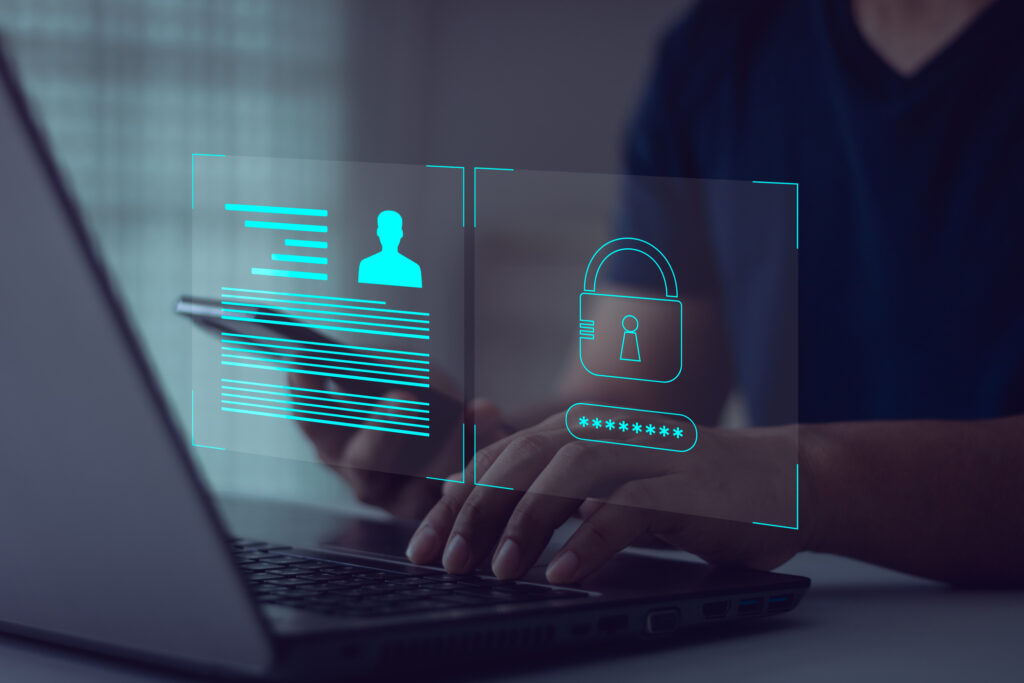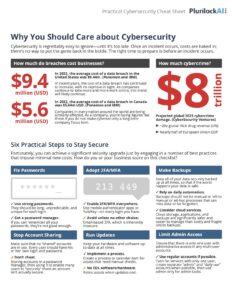In today’s digital age, where cyber threats are becoming increasingly sophisticated, protecting sensitive information and systems is paramount. One of the foundational pillars of cybersecurity is authentication, the process of verifying the identity of users or systems accessing resources. Multi-factor authentication (MFA) is a crucial tool in this arsenal, providing an additional layer of security beyond traditional username and password authentication. In this deep dive, we’ll explore what MFA is, why it matters in cybersecurity, and conduct an in-depth analysis of its importance in safeguarding against various cyber threats.
What is Multi-factor Authentication (MFA)?
Multi-factor authentication, also known as two-factor authentication (2FA) or two-step verification, is a security mechanism that requires users to provide two or more forms of identification before gaining access to a system or application. These factors typically fall into three categories:
- Something you know: This includes passwords, PINs, or answers to security questions.
- Something you have: This involves physical tokens, smart cards, or mobile devices.
- Something you are: This encompasses biometric identifiers such as fingerprints, facial recognition, or iris scans.
MFA combines these factors to enhance security significantly compared to relying solely on passwords. Even if one factor is compromised (e.g., a password is stolen), the attacker would still need the additional factor(s) to gain unauthorized access.
Why MFA Matters in Cybersecurity
1. Strengthening Authentication:
Passwords alone are no longer sufficient to protect against the diverse array of cyber threats. With the prevalence of data breaches and password leaks, many users reuse passwords across multiple accounts, making them vulnerable to credential stuffing attacks. MFA mitigates this risk by adding an extra layer of authentication, reducing the likelihood of unauthorized access even if passwords are compromised.
2. Protecting Against Phishing:
Phishing attacks, where attackers trick users into divulging their credentials through deceptive emails or websites, remain a prevalent threat. MFA helps mitigate the impact of phishing by requiring attackers to obtain not only the victim’s password but also an additional factor, such as a one-time code generated by a mobile app. This significantly raises the bar for attackers, making successful compromises more challenging.
3. Mitigating Insider Threats:
Insider threats, whether malicious or accidental, pose significant risks to organizations. An employee with legitimate access credentials could abuse their privileges or inadvertently expose sensitive data. MFA adds an extra layer of security, making it more difficult for insiders to carry out unauthorized activities without the additional authentication factor.
4. Compliance Requirements:
Many regulatory standards and industry frameworks, such as the Payment Card Industry Data Security Standard (PCI DSS) and the Health Insurance Portability and Accountability Act (HIPAA), mandate the use of MFA as part of security best practices. Compliance with these standards is essential for organizations handling sensitive data, and implementing MFA helps meet these requirements.
5. Enhancing User Experience:
While security is paramount, MFA can also enhance the user experience by offering flexibility in authentication methods. Users can choose from various factors based on their preferences and convenience, such as receiving authentication codes via SMS, using authentication apps, or utilizing biometric authentication. This flexibility accommodates different user preferences while maintaining security standards.
In-depth Analysis of the Importance of MFA
A. Defense Against Credential Theft:
One of the primary benefits of MFA is its ability to mitigate the risk of credential theft. Passwords are inherently vulnerable, as they can be stolen through various means such as phishing, malware, or brute-force attacks. Once a password is compromised, an attacker can easily gain unauthorized access to sensitive accounts or systems. MFA disrupts this attack vector by requiring an additional factor beyond the stolen password, significantly raising the bar for attackers.
B. Reducing the Impact of Password Reuse:
Password reuse is a prevalent issue among users, driven by the sheer number of accounts individuals need to manage coupled with the difficulty of remembering unique passwords for each account. However, this practice poses a significant security risk, as the compromise of one account can lead to the compromise of others if the same password is reused. MFA mitigates the impact of password reuse by adding an extra layer of authentication, ensuring that even if a password is compromised, the attacker would still need the additional factor(s) to access other accounts.
C. Balancing Security and Usability:
One of the challenges in implementing security measures is finding the right balance between security and usability. While robust security is essential, overly complex authentication mechanisms can frustrate users and hinder productivity. MFA addresses this challenge by providing a layered approach to authentication that enhances security without overly burdening users. By offering a variety of authentication factors and allowing users to choose the most convenient option, organizations can maintain a high level of security while ensuring a positive user experience.
D. Adapting to Evolving Threats:
Cyber threats are constantly evolving, with attackers employing increasingly sophisticated techniques to bypass security measures. MFA provides a dynamic defense against these evolving threats by adding an extra layer of complexity to the authentication process. As attackers develop new methods to compromise passwords or circumvent traditional security controls, MFA raises the bar for attackers, forcing them to overcome additional hurdles to achieve their objectives. Moreover, organizations can adapt MFA implementations to incorporate emerging authentication technologies and stay ahead of evolving threats.
E. Building a Culture of Security:
Beyond its technical benefits, MFA plays a crucial role in building a culture of security within organizations. By implementing MFA as a standard security practice, organizations demonstrate their commitment to protecting sensitive data and resources. This sends a clear message to employees, partners, and customers that security is a top priority. Additionally, MFA serves as a visible reminder of the importance of strong authentication practices, encouraging individuals to adopt similar security measures in their personal and professional lives.
Conclusion
Multi-factor authentication (MFA) is a critical component of modern cybersecurity strategies, offering an additional layer of protection beyond traditional password-based authentication. By requiring users to provide multiple forms of identification, MFA significantly enhances security, mitigates the risk of credential theft, and helps organizations comply with regulatory requirements. Moreover, MFA enhances the user experience by offering flexibility in authentication methods while balancing security and usability. As cyber threats continue to evolve, MFA remains a fundamental tool in defending against unauthorized access and safeguarding sensitive information and systems.
In conclusion, the adoption of MFA is not merely a security best practice but a strategic imperative for organizations seeking to protect their assets and maintain trust in an increasingly interconnected digital world.















